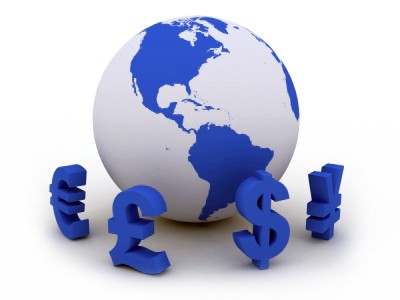Diversifying Your Portfolio With Foreign Currencies
Post on: 31 Март, 2015 No Comment

Updated: March 21, 2013 at 8:45 AM
Portfolio diversification consists of an investment strategy which basically spreads risk among a number of different types of investments.
The idea behind this strategy has to do with the fact that if you hold all of your investments in similar securities such as stocks and bonds in your local currency, then your portfolio will mirror the performance of just those two markets. Nevertheless, if both markets suffer from a downturn, so too will your portfolio’s value since no hedging investments were made.
Currency diversification
Alternatively, consider the impact of currency diversification if a portion of the portfolio had instead been invested in assets denominated in a foreign currency, say Swiss Francs for example.
In this case, the performance of the Swiss currency and its asset market relative to your local currency and markets might have at least partially offset portfolio losses that were taken your local stock and bond market.
Traditional Portfolio Diversification
Traditionally, investors use a combination of equities and bonds in their portfolio for diversification purposes as part of their money management process. This is typically done to hedge against a downturn in economic conditions with the debt instruments which continue paying interest when equities depreciate because of a slowing economy.
Nevertheless, the downfall of this strategy comes if the economic conditions become worse and inflation begins to erode the value of the currency. In this case, the interest on bonds will not sufficiently compensate for the capital loss on the stock investments.
Even real estate investments could go south, as was recently seen after the sub-prime mortgage fiasco hit the U.S. housing market hard.
Adding a Foreign Currency to the Portfolio
While currency trading is a far cry from investing, adding a foreign exchange component to a portfolio by investing in foreign currency denominated assets might be something to consider in today’s world financial environment.
Depending on the objectives of the investor, assets in a number of different currencies could be added to the portfolio to add diversification and balance. As another option, if all asset investments needed to be in U.S. Dollar denominated investments, the cash portion of the portfolio could be at least partially exchanged for a different currency, perhaps one with a higher interest rate.
Currencies could also be considered as an investment in the stock of a nation. A country which is experiencing growth and abundance will in most cases have a strong currency, while a country which is marginal economically will tend to have a weaker currency.

Which Currencies Would be Considered
With U.S. interest rates presently at particularly low historical levels near zero, this makes it rather unattractive to hold U.S. Dollar cash balances. As a result, an investor might be inclined to exchange some U.S. Dollars for Australian Dollars.
Australia has interest rates around four and a half percent, and so the U.S. currency exchanged for the Australian currency would effectively collect just under the four and a half percent interest on the funds exchanged.
Other ways to diversify a portfolio using the foreign exchange market would be to allocate a part of the portfolio to a commodity currency. This will effectively hedge inflation risk to a certain degree, especially if the commodity currency is from an oil producing nation such as Canada or a gold exporter like Australia.
Australia, Canada and even New Zealand’s dollars are all considered commodity currencies, and their economies have also been expanding healthily for some time now while the economies of the United States, Japan and Europe remain rather sluggish. Investing in assets or cash held in some of these currencies could also be beneficial to achieve a more diversified portfolio.
While having a portion of your portfolio in a foreign currency might not appear to be a sound investment given the possibility for exchange rate fluctuations, these movements can also benefit your portfolio.
Furthermore, although inflation has taken a toll on the value of money globally, having a well chosen currency position in your investment portfolio could also provide you with a handsome return on your investment over time.
Risk Statement: Trading Foreign Exchange on margin carries a high level of risk and may not be suitable for all investors. The possibility exists that you could lose more than your initial deposit. The high degree of leverage can work against you as well as for you.














